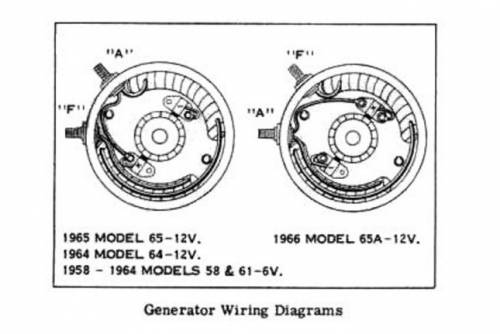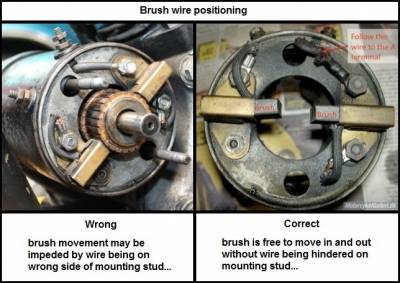Table of Contents
This is an old revision of the document!
IH: Electrical System - Sub-02A
Bench Testing a Generator
Article by sifty of the XLFORUM 1)
Some simple diagnostic tests can be done with a multimeter.
Note, these tests should be performed after the initial visual inspection and cleaning as outlined in the service manuals.
And so are based on testing the unit out of the bike.
The results of these tests should determine if anything is seriously wrong.
But will not identify an intermittent generator fault,
(these can be hard to diagnose, and probably need testing on the bike so the genny can be driven at varying revs).
- Generators are fairly simple, they consist of; 2)
- Field windings are designated “F” (attached to the case).
- Armature windings are designated as “A” (wound around the rotating shaft).
- And spring loaded brushes which connect to the commutator section of the armature.
- Most generators will be the 65 or 65A type.
- You can identify the “A” terminal (if not marked) by seeing which one goes to both a field winding and one of the brushes.
- Note this brush must be insulated from the brush plate, while the other brush is not as it is the negative part of the 12V circuit.
So is directly connected to ground. - Generally if the windings test out ok, the generator should operate correctly;
- There are no short circuits.
- And the commutator, brushes and bearings are clean and in good order.
Brush assembly
The brush plate is easily removable, and inspection/ cleanup should be straight forward.
Care must be taken when installing the brush plate.
Make sure that the brush- armature connecting wire is not pinched (can short circuit to the frame).
And also that it is routed around the long mounting bolt and has enough length to not hinder installation.
(the plate has a locating pin and can only be installed in one position)
The brushes must be free to move when installed.
Ensure the connecting wires are tightened in a position to allow full movement.
And make sure the bare end of the armature brush wire does not contact the case or end cap on assembly.


